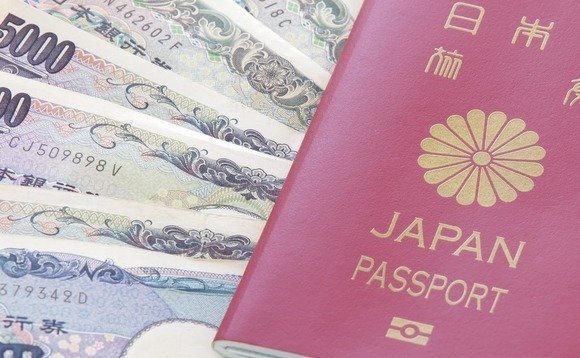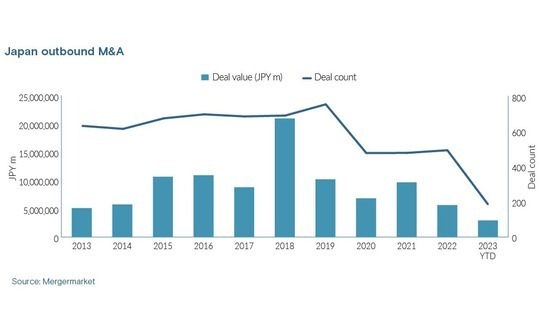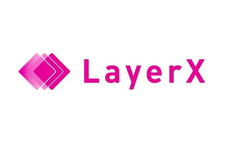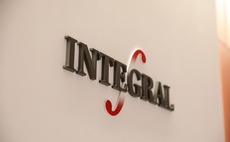
Japan M&A: Go digital, go global

Panasonic moved from hardware to software with the acquisition of Blue Yonder, a path that other Japanese corporates are expected to follow. PE investors can sell to them or work with them
Searching for reference points to Panasonic's USD 8.5bn acquisition of US-based supply chain management software provider Blue Yonder, Hide Harada, a longstanding executive at the Japanese technology giant who was involved in the deal, reaches back 70 years to a deal involving Philips.
Kōnosuke Matsushita, Panasonic's founder, anticipated a post-war boom in household electronics and wanted a leg-up to enter the TV market. Netherlands-based Philips was smaller than its US peers, but Matsushita was convinced by the company's technical competency, international outlook, and willingness to provide support. This led to the formation of Matsushita Electronics Corporation.
Matsushita was adamant that strong partners were essential to driving growth, a belief Harada carried with him during the two-year pursuit of Blue Yonder. Completing the deal involved facing claims from internal opponents – and external critics – who decried Panasonic for stepping outside of its hardware comfort zone to acquire a software company at such a rich valuation.
Moreover, it necessitated the coordination of multiple interests; not just Panasonic's stakeholders and Blue Yonder's management, but also the US company's PE owners, The Blackstone Group and New Mountain Capital. They had held the business since 2016 and were agitating for an exit.
"Before we executed the deal, I had discussions in New York with Blackstone and New Mountain, and my subordinates said to me, ‘You need to be careful, these people are private funds, they only care about money,'" Harada, now chief strategy officer at B2B equipment and appliances unit Panasonic Connect, told the Mergermarket M&A Forum Japan 2023.
"I replied that this wasn't really the case. I learned a lot from my interactions with Blackstone and New Mountain and I had a lot of trust and respect for them. Whether we are doing this or carving out our security systems business or doing something else, partnership is very important."
The Blue Yonder transaction speaks to two key themes running through corporate Japan: the revitalisation of the country's technology manufacturing conglomerates by repositioning them from hardware to software, from asset-heavy to asset-light, from products to services; and the use of outbound M&A to become more globally competitive and tap into new streams of growth.
At the same time, it captures one role that private equity plays in these processes, namely seller to a strategic buyer. But the industry's skillset could be put to broader use as a partner in sourcing deals and ensuring the digital transformation (DX) corporate Japan is buying is properly embedded, said Ferdinando Falco Beccalli, chairman of Falco Global Partners, an operations-focused investment firm.
"The underlying problem in Japanese companies managing businesses outside of Japan – particularly in the US and Europe – is that the price paid is much higher than the fair price for the asset or integration and execution of the deal isn't completed in an optimal way," Beccalli told the Forum.
"There is a solution here. Japanese companies interested in buying assets outside of Japan should work in partnership with other companies or with private equity, creating joint ventures for the acquisition of specific assets that over time they can integrate completely."
Far and wide
Japanese outbound M&A peaked at JPY 20.9trn (USD 145bn) in 2018 with two deals – Takeda Pharmaceutical's purchase of Shire and the Sprint Corporation-T-Mobile merger – accounting for about 60% of the total. Both proved difficult to digest. Takeda has been divesting assets virtually ever since, creating opportunities for several strategic players and at least two private equity firms.
Excluding 2018, annual average deal flow for 2013-2022 was JPY 8.2trn, according to Mergermarket, with Blue Yonder part of the class of 2021. The drop-off to JPY 5.7trn in 2022 and to JPY 2.9trn for 2023 to date is meaningful but not as severe as those in global or Japanese domestic M&A. This would appear to confirm advisors' claims of continued strong demand for overseas assets.
"There are two groups of Japanese companies that have a clear thesis to pursue cross-border deals: global businesses that need to enhance their competitiveness through scale expansion or capability accretion; and domestic companies challenged by a shrinking local market that need to find second growth platforms outside of Japan," Takashi Ohara, a partner at Bain & Company, told the Forum.

He sees the most activity in health and pharmaceuticals and automotive. Of the six outbound deals of JPY 150bn or more announced in 2022, two were healthcare (Takeda bought Nimbus Lakshmi, Sumitomo Pharma picked up a large minority stake in Myovant Sciences) and one was automotive (Yokohama Rubber acquired Trelleborg Wheel Systems Holding in Sweden).
IT services was also highlighted, where the standout transaction remains Hitachi's USD 8.5bn acquisition of GlobaLogic in 2021, which facilitated exits for Partners Group and Canada Pension Plan Investment Board (CPPIB). Ohara expects to see more M&A activity in this area, noting that "all the major companies are saying that overseas is their thesis."
The Hitachi-GlobalLogic deal is emblematic of conglomerate revitalisation as well. Hitachi is Japan's divestment posterchild, having promised in 2009 to cut its number of group companies by more than one-third. It has since offloaded a string of technology manufacturing assets to private equity investors, with KKR alone picking up three.
This has worked in parallel with efforts to reconfigure Hitachi for the digital age, emphasising artificial intelligence (AI) and big data analytics. GlobalLogic was integrated into Lumada, a DX platform that Hitachi used internally and now offers to third parties. Lumada's revenue is projected to double between 2021 and 2024, reaching JPY 2.7trn. Overall revenue was JPY 10.3trn in 2021.
Green energy is another Hitachi priority. Last year, the parent paid JPY 218bn to take full control of its energy subsidiary, arguing this would accelerate synergies and innovation. Specific reference was made to deeper collaboration with GlobalLogic and digital consulting business Hitachi Vantara.
Strategic repositioning
Panasonic has pursued a similar M&A-driven repositioning strategy. Conversion to a holding company structure in 2021 capped a reorganisation process that included divestment of non-core assets and the creation of seven operating companies focused on consumer and business appliances, automotive solutions, kitchen and bathroom fittings, industrial technology, and energy.
Panasonic Connect, which accounted for 13% of the parent's JPY 7.4trn in net sales last year, went through its own rationalisation. Eight businesses were discontinued and two were sold off: Polaris Capital Group acquired the security systems business in 2019 (with Panasonic retaining 20%); and satellite communications division ICT Global went to Apax Partners in 2021.
Following the purge, the company was left with factory automation equipment, personal computers, high-end audiovisual equipment, in-flight entertainment systems, and process innovation services.
"We retained businesses we thought could enjoy top-class market share – in the top three globally. The issue with those hardware-focused that remained was where should we invest in the mid-to-long-term to further improve profitability," said Harada. "Providing solutions is something we are good at, so we redefined the ground and made process innovation our core focus."
Specifically, Panasonic Connect wanted to build on its strong foundations in IT hardware and occupy the space between devices and the cloud – essentially providing a layer of software that connects manufacturing, logistics, and distribution. Blue Yonder appealed because of the potential to link its supply chain software with Panasonic Connect's process innovation capabilities.
The company has about 3,000 customers across 76 countries, including 53 of the top 100 global manufacturers, 28 of the 50 largest global third-party logistics providers, and 76 of the top 100 retailers. Revenue came to USD 1.2bn in 2022, of which USD 575m was annual recurring revenue (ARR) from software-as-a-service (SaaS) subscribers. The customer retention rate was 97%.
Panasonic Connect reached out in early 2018, which led to meetings and the discovery of significant common ground. In April 2019, they established a joint venture in Japan. Yasu Higuchi, a former CEO of Microsoft Japan who took on the lead role at Panasonic Connect in 2017, and Harada, who at the time was working in corporate planning, soon began discussing a full acquisition.
Within Panasonic, however, there was opposition to the deal. "[Kazuhiro Tsuga, then CEO of Panasonic] called me up and said, ‘People cannot agree, but let's not give up. We are moving strategically in the right direction by acquiring this company, so let's think about a partial investment. We can put people on the board and better understand the business,'" Harada recalled.
Panasonic acquired 20% of Blue Yonder at an enterprise value of USD 5.5bn in May 2020, buying shares from New Mountain. It got one board seat.
Nearly 12 months later, Higuchi and Harada tried again. The valuation had risen to USD 8.5bn, which would make it Panasonic's largest-ever acquisition. Tsuga effectively silenced the critics by claiming that Panasonic could not survive without the deal and pushed it through, according to Harada. The acquisition was announced in April 2021 and closed about five months later.
Girish Rishi, then CEO of Blue Yonder, also played an important role during this period of uncertainty. Blackstone and New Mountain were getting impatient, suggesting that the company could go public at a valuation above JPY 1.8trn if Panasonic was unable to proceed. Rishi appeased the investors by saying that the Panasonic partnership could accelerate supply chain development.
Trial and error
Criticism of the Blue Yonder deal was not groundless. Panasonic had run into difficulties with large-scale M&A before, notably when taking full ownership of Sanyo Electric and Panasonic Electric Works for JPY 800bn in 2011. The company is not unique in this respect.
Ohara of Bain identified overpaying and substandard due diligence as the major reasons for corporate Japan's past failures in outbound M&A. There has been an improvement in recent years, but he still sees cases of poorly executed integration.
Common pitfalls include a lack of clarity in the integration thesis – the central ambition of the deal should be well established and connected to individual integration actions – and a failure to build a strong culture and governance system across the different teams. There are also risks in an inability to create value and encourage widespread buy-in for the integration.
"Creating value early on is important – to justify the price and multiple, and to create momentum in integration. In the first three months to one year, people will look at the deal and asking what's going on. If you can say, ‘We are creating this much tangible value,' they get excited about the journey. If you don't do that, they become sceptical and you lose momentum," Ohara said.
On governance, Beccalli of Falco Global, added that the Japanese instinct to centralise decision-making in Tokyo can undermine efforts made elsewhere because it slows down processes. "There is an inability to delegate or a lack of trust. If Japanese companies could acquire some flexibility in that area, things would move better," he said.
This fits neatly into Harada's observations about why the Blue Yonder acquisition has proved beneficial, notably earlier efforts led by Higuchi to create a more inclusive, open dialogue culture at Panasonic Connect. In his view, Panasonic had to buy a software business if it wanted to be serious about DX, and it had to absorb the US approach for the strategy to be successful.
"The US-led DX model is big picture, top-down, agile, scalable, and cloud-first. In Japan, there is so much focus on details, on consensus, and on bottom-up, micro views," he said.
"You could acquire this company, and maybe after one-and-a-half years, there would have been disagreements and discord between the Japanese side and Blue Yonder. Without evolving the Japanese management style, it wasn't going to work."
On a broader level, there is a trickle-down effect in corporate Japan – what is accepted by the big conglomerates becomes more amenable to traditional small and medium-sized enterprises. Just as private equity can support Japanese corporates on outbound M&A with a DX theme, it can also work with domestic-only players on technology-led upgrades.
It is no coincidence that DX is now part of GPs' Japan playbooks, nor that IT services businesses that can participate in this transformation have become popular investment targets. "Japan is far behind on digitalisation – this is the country where the fax machine refuses to die – and digitalisation catch-up is a huge secular trend," said Mark Chiba, group chairman of The Longreach Group.
Latest News
Asian GPs slow implementation of ESG policies - survey
Asia-based private equity firms are assigning more dedicated resources to environment, social, and governance (ESG) programmes, but policy changes have slowed in the past 12 months, in part due to concerns raised internally and by LPs, according to a...
Singapore fintech start-up LXA gets $10m seed round
New Enterprise Associates (NEA) has led a USD 10m seed round for Singapore’s LXA, a financial technology start-up launched by a former Asia senior executive at The Blackstone Group.
India's InCred announces $60m round, claims unicorn status
Indian non-bank lender InCred Financial Services said it has received INR 5bn (USD 60m) at a valuation of at least USD 1bn from unnamed investors including “a global private equity fund.”
Insight leads $50m round for Australia's Roller
Insight Partners has led a USD 50m round for Australia’s Roller, a venue management software provider specializing in family fun parks.








